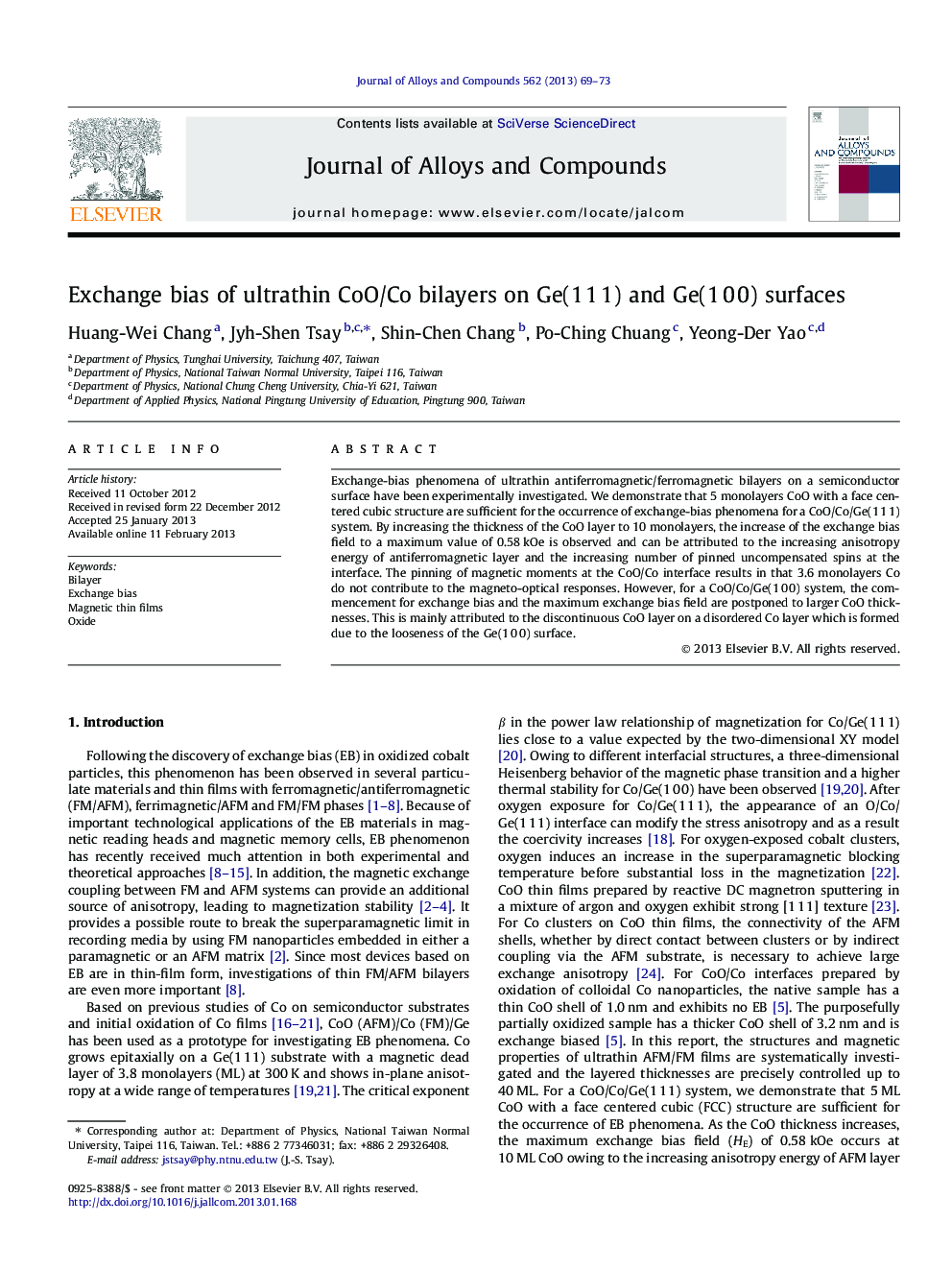| Article ID | Journal | Published Year | Pages | File Type |
|---|---|---|---|---|
| 1614245 | Journal of Alloys and Compounds | 2013 | 5 Pages |
Exchange-bias phenomena of ultrathin antiferromagnetic/ferromagnetic bilayers on a semiconductor surface have been experimentally investigated. We demonstrate that 5 monolayers CoO with a face centered cubic structure are sufficient for the occurrence of exchange-bias phenomena for a CoO/Co/Ge(1 1 1) system. By increasing the thickness of the CoO layer to 10 monolayers, the increase of the exchange bias field to a maximum value of 0.58 kOe is observed and can be attributed to the increasing anisotropy energy of antiferromagnetic layer and the increasing number of pinned uncompensated spins at the interface. The pinning of magnetic moments at the CoO/Co interface results in that 3.6 monolayers Co do not contribute to the magneto-optical responses. However, for a CoO/Co/Ge(1 0 0) system, the commencement for exchange bias and the maximum exchange bias field are postponed to larger CoO thicknesses. This is mainly attributed to the discontinuous CoO layer on a disordered Co layer which is formed due to the looseness of the Ge(1 0 0) surface.
Graphical abstractFigure optionsDownload full-size imageDownload as PowerPoint slideHighlights► The exchange-bias (EB) and related mechanisms are investigated for CoO/Co/Ge. ► Five ML CoO on Co/Ge(1 1 1) is sufficient for the occurrence of EB phenomena. ► FCC structure for the CoO layer is developed. ► Effectively 3.6 ML Co cannot contribute to magneto-optic responses. ► The maximum HE value is related to the disordered Co and discontinuous CoO overlayers.
